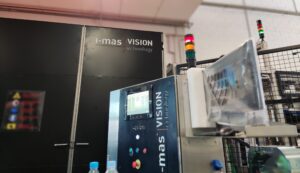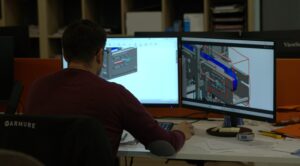Imagine working on your product design project. You want it to be efficient, attractive, and, above all, successful in the market. But, how do you achieve this without getting lost in a sea of inefficient and costly processes? This is where Lean Manufacturing comes into play, a philosophy that can transform your approach and results in industrial design.
Explore in this article how Lean Manufacturing integrates with industrial design to optimize product design and development.
What is Lean Manufacturing?
Lean Manufacturing is a management philosophy focused on eliminating waste within production processes. Its goal is to improve efficiency and quality by reducing costs and increasing customer satisfaction. This methodology originated from the Toyota Production System and has been adopted by numerous industries around the world.
Principles of Lean Manufacturing
- Identification of Value: Determine what the customer truly values and eliminate what does not add value.
- Value Stream Mapping: Analyze each step of the process to identify and eliminate waste.
- Continuous Flow: Ensure that processes flow without interruptions.
- Pull Production: Produce only what the customer has requested.
- Continuous Improvement: Continuously seek ways to improve the process.

What is Industrial Design?
Industrial design is a discipline focused on the creation and development of products that will be manufactured using mass production techniques. It involves functional, aesthetic, and ergonomic aspects, as well as the interaction of the product with the end user. Its main goal is to design products that are not only functional and efficient but also attractive and easy to use.
Integration of Lean Manufacturing in Product Design
Integrating Lean Manufacturing into industrial design can yield numerous benefits, making the product design process more efficient and effective. Here are some ways in which these two disciplines can complement each other:
- Reducing Waste from Design: Applying Lean principles from the design phase helps identify and eliminate unnecessary elements that do not add value to the final product. This includes simplifying the design to facilitate manufacturing and assembly, as well as reducing the use of costly or difficult-to-process materials.
- Process Optimization: Lean Manufacturing promotes the creation of more agile and efficient production processes. By designing products with these processes in mind, it ensures that the transition from design to manufacturing is smoother, thereby reducing production times.
- Rapid Prototyping and Continuous Improvement: The use of rapid prototyping techniques, a common practice in industrial design, aligns perfectly with Lean’s principle of continuous improvement. It allows for rapid iteration on the design, testing, and adjusting products before mass production.
- User-Centered Focus: Both Lean Manufacturing and industrial design place a strong emphasis on the end user. The identification of value in Lean aligns with the goal of industrial design to create products that meet the needs and desires of the user, enhancing their overall experience.
Product Design at i-mas
The combination of Lean Manufacturing and industrial design not only optimizes the product design and development process but also creates significant value for both companies and consumers. By eliminating waste, improving efficiency, and focusing on the end user, these two disciplines can work together to design innovative and high-quality products.
At i-mas, with over 20 years of experience in product design, we offer creative and effective solutions through the use of specific methodologies like Lean Manufacturing for every project we undertake.
Are you looking for a product design and development company in Barcelona? Contact us today!



